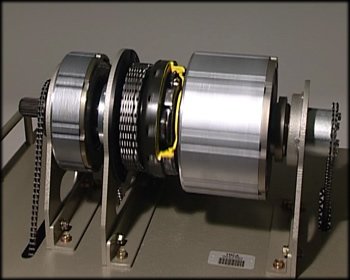Hybrid Car System Components
Hybrid Car Types
Hybrid-electric vehicles (HEVs) combine the benefits of gasoline engines and electric motors and can be configured to obtain different objectives, such as improved fuel economy, increased power, or additional auxiliary power for electronic devices and power tools. Compare Hybrids Side by Side

Basic Hybrid Types - Electric Models - Hybrid Systems - Series-parallel Hybrid - System Components - Driving
Hybrid system components
SummaryA permanent magnet brushless motor/generator is mounted adjacent to the engine. A smaller motor/generator replaces the engine flywheel. The motor control unit controls the delivery of electric current to and from the battery and the electric motors.
The internal combustion engine in a hybrid vehicle is designed to operate only within its most efficient operating range, typically between 2000 and 4500 rpm. Its construction has lighter internal components than would otherwise be required, resulting in an efficient engine with low friction qualities. It may also incorporate other fuel efficient technologies such as shutting down selected engine cylinders, multi runner intake manifolds, and throttleless intake manifolds.
A powerful permanent magnet brushless motor/generator is mounted adjacent to the engine. It draws power from the battery to drive the vehicle at low load and speed situations, as well as assisting the engine to provide more power during acceleration. During deceleration and braking it functions as a generator, reclaiming kinetic energy by converting it to electrical energy and storing it in the battery.
Mounted between the engine and motor is an epicyclic power divider that also functions as a constantly variable transmission. It allocates varying amounts of drive from the engine and the motor to the wheels, selecting the best balance for the present driving condition.
A sealed nickel metal hydride 200-300 volt battery provides higher power output and is lighter than other battery types. Its output may be raised to 500 volts by the control unit to power the electric motors.
A small permanent magnet brushless motor/generator replaces the engine flywheel. It functions as the engine’s starter motor and battery charger. It also provides additional power for the larger main motor/generator.
The motor control unit controls the delivery of electric current to and from the battery and the electric motors. It has its own cooling system to control its operating temperature. It also contains an inverter that is used to change the alternating current produced by both motors into direct current to charge the battery and to convert the direct current from the battery into alternating current to power the electric motors.

